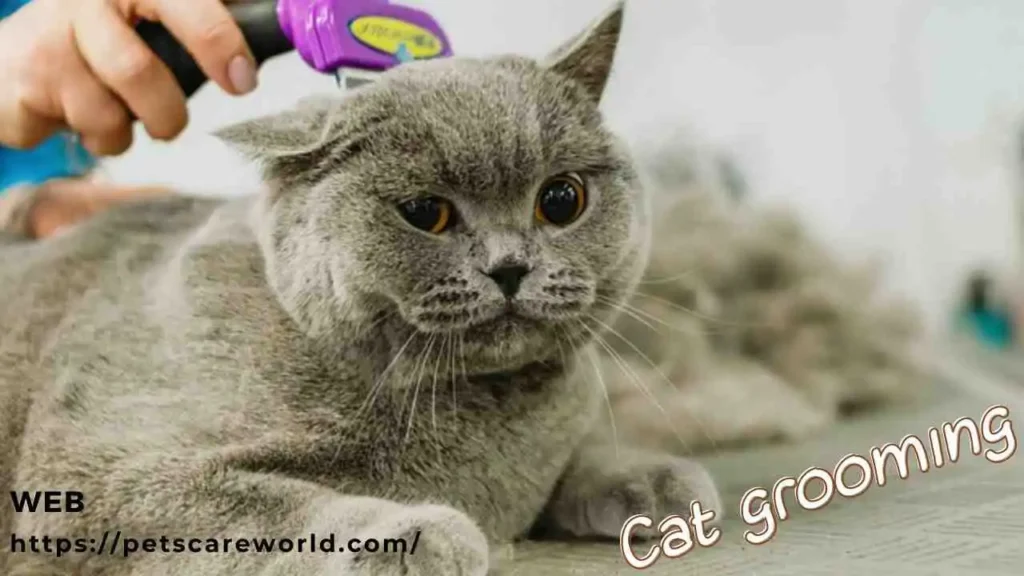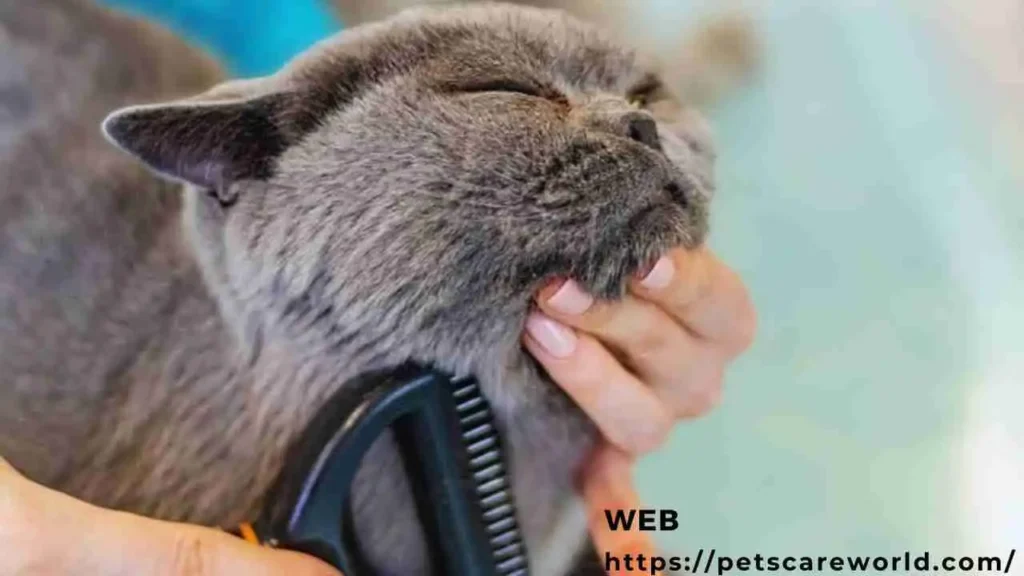Cats are known for their independent nature and impeccable self-grooming abilities. However, they still require assistance from their human companions to maintain their overall health and appearance. Regular grooming sessions not only keep your feline friends looking their best but also contribute to their overall well-being. In this article, we will explore the importance of cat grooming and provide you with essential tips and techniques to ensure your cat’s grooming routine is a pleasant and beneficial experience for both of you.
Understanding the Importance of Cat Grooming
Regular grooming sessions are essential for maintaining your cat’s hygiene and health. Grooming helps to remove dirt, dead hair, and parasites from your cat’s coat, preventing matting and skin irritations.
- Grooming helps remove dirt, dead hair, and parasites from your cat’s coat.
- Regular grooming prevents matting and reduces the risk of skin irritations for your cat.
- Brushing your cat’s fur removes loose hair and helps distribute natural oils, keeping its coat healthy and shiny.
- Nail clipping prevents overgrowth, which can lead to discomfort and potential injuries.
- Cleaning your cat’s ears removes wax buildup and reduces the risk of infections.
- Brushing your cat’s teeth with toothpaste and a toothbrush promotes good oral hygiene and prevents dental issues.
- Using cat-specific shampoo ensures gentle and effective cleaning without causing skin irritation or dryness.
It also promotes blood circulation and stimulates natural oil production, resulting in a healthy and shiny coat. Additionally, grooming allows you to check for any abnormalities, such as lumps, bumps, or skin issues, which can be detected early for prompt veterinary attention.
Grooming Tool for Your Cats
Before you start grooming your cat, gather the necessary supplies. Grooming tools for cats may include
- Cat brush: A grooming tool specifically designed for brushing and removing loose hair from a cat’s coat.
- Cat-specific shampoo: Shampoo formulated specifically for cats, designed to clean their fur without causing skin irritation or dryness.
- Nail clippers: Tools used to trim a cat’s nails, preventing them from becoming too long and causing discomfort or scratching.
- Ear cleaners: Specialized solutions or wipes for cleaning a cat’s ears, removing wax buildup, and preventing infections.
- Toothbrushes: Small brushes with soft bristles designed for brushing a cat’s teeth, promoting good oral hygiene and preventing dental issues.
- Toothpaste: Cat-friendly toothpaste with flavors appealing to cats, used in conjunction with a toothbrush to clean their teeth and freshen their breath.
Having these items ready will make the grooming process more efficient and enjoyable for both you and your cat.
Preparing Your Cat for Grooming
It’s important to create a calm and positive environment for grooming. Choose a quiet and comfortable space where your cat feels relaxed. Introduce grooming gradually, starting with short sessions and gradually increasing the duration as your cat becomes more comfortable. Offer treats and praise to reinforce positive behavior and reward your cat for their cooperation.

Here are some key steps to prepare your cat for grooming, ensuring a positive and stress-free experience:
1. Familiarize Your Cat with Grooming Tools:
- Introduce grooming tools such as brushes, combs, and nail clippers to your cat gradually.
- Allow them to sniff and explore the tools to reduce apprehension.
2. Create a Calm Environment:
- Choose a quiet and peaceful area for grooming.
- Minimize distractions and loud noises that might startle your cat.
3. Positive Association:
- Associate grooming with positive experiences by offering treats and praise.
- Gently pet and stroke your cat while using grooming tools to create a soothing connection.
4. Handling and Touching:
- Regularly handle your cat’s paws, ears, and other body parts to accustom them to touch.
- This helps reduce sensitivity and resistance during grooming.
5. Gradual Introduction:
- Start with short grooming sessions and gradually increase the duration.
- Gradual exposure helps your cat build tolerance over time.
6. Desensitization Techniques:
- Introduce the sound of the grooming tools without using them to desensitize your cat to the noise.
- Gradually incorporate the tools into grooming as your cat becomes more comfortable.
7. Positive Reinforcement:
- Reward your cat with treats, gentle praise, or playtime after successful grooming sessions.
- This reinforces the idea that grooming leads to enjoyable experiences.
8. Body Language Awareness:
- Pay attention to your cat’s body language during grooming.
- If they seem tense or stressed, pause the grooming session and try again later.
9. Patience and Consistency:
- Grooming may take time, especially if your cat is new to the process.
- Be patient and consistent in your approach, and avoid rushing.
10. Professional Help:
- If your cat is particularly anxious or resistant to grooming, consider seeking professional groomers who specialize in handling feline clients.
By following these steps and taking the time to prepare your cat for grooming, you’ll help create a positive association with the experience and ensure that both you and your cat enjoy the process. Remember, patience, gentle handling, and positive reinforcement are key to a successful grooming routine.
Brushing Your Cat’s Coat
Regular brushing is essential for cats, regardless of their coat length. It helps to remove loose hair, prevent matting, and reduce hairballs. Use a brush suitable for your cat’s coat type, such as a slicker brush for long-haired cats or a rubber grooming mitt for short-haired cats. Brush gently in the direction of hair growth, paying extra attention to areas prone to matting, such as behind the ears and under the armpits.
Bathing Your Cat
Most cats are self-cleaning and do not require frequent baths. However, if your cat’s coat becomes dirty or greasy, a bath may be necessary. Use a cat-specific shampoo and lukewarm water. Ensure the water level is shallow, and avoid getting water in their ears or eyes. Gently massage the shampoo into your cat’s coat, rinse thoroughly, and towel dry. If your cat finds bathing stressful, consider seeking professional grooming services.
Trimming Your Cat’s Nails
Regular nail trims are important for your cat’s comfort and to prevent their nails from becoming too long or sharp. Use cat nail clippers and trim the tips of the nails, taking care not to cut too close to the quick. If you’re unsure about trimming your cat’s nails, consult a veterinarian or a professional groomer for guidance.
Cleaning Your Cat’s Ears
Ear cleaning is essential to prevent wax buildup, infections, and ear mites. Use a cat-specific ear cleaner and cotton balls or pads. Gently lift your cat’s ear flap and clean the visible part of the ear, avoiding inserting anything deep into the ear canal. If you notice excessive wax, foul odor, or signs of discomfort, consult your veterinarian.
Brushing Your Cat’s Teeth
Dental hygiene is crucial for cats to prevent dental disease and maintain overall health. Introduce tooth brushing gradually using a cat-specific toothbrush and toothpaste. Start by letting your cat taste the toothpaste, then gradually progress to brushing their teeth. Focus on the outer surfaces of the teeth, using gentle circular motions. Consult your veterinarian for additional guidance on cat dental care.
Dealing with Mats and Tangles
Mats and tangles can be uncomfortable for your cat and may lead to skin irritations. Regular brushing helps prevent mats, but if they occur, use a mat splitter or de-matting comb to carefully remove them. Take extra caution not to pull your cat’s skin or cause any discomfort. For severe matting, it’s best to consult a professional groomer.
Recognizing Signs of Skin Issues or Parasites
During grooming sessions, carefully inspect your cat’s skin for any redness, sores, or signs of parasites such as fleas or ticks. Pay attention to excessive itching, hair loss, or changes in coat condition. If you notice any abnormalities, consult your veterinarian for a proper diagnosis and treatment.
Grooming Tips for Long-Haired Cats
Long-haired cats require more frequent grooming to prevent matting. Use a wide-toothed comb or a slicker brush to remove tangles and loose hair. Consider scheduling professional grooming sessions for long-haired breeds to maintain their coat in optimal condition.
Grooming Tips for Short-Haired Cats
Although short-haired cats require less maintenance, regular brushing still helps to minimize shedding and remove loose hair. A rubber grooming mitt or a soft bristle brush can effectively remove dead hair from their coat.
Grooming Tips for Senior Cats
Senior cats may require additional grooming assistance due to age-related conditions such as arthritis or decreased mobility. Use gentle and supportive techniques during grooming sessions, ensuring your cat remains comfortable throughout the process.
Grooming Tips for Kittens
Early introduction to grooming is vital for kittens to establish a positive association. Start with short, gentle grooming sessions to acclimate them to the process. Use kitten-friendly grooming tools and reward their cooperation with treats and playtime.
Professional Grooming Services for Cats

If you find grooming your cat challenging or your cat has specific grooming needs, consider seeking professional grooming services. Professional groomers have the expertise and tools to handle grooming tasks effectively and ensure your cat’s well-being.
Conclusion
Regular grooming is a vital aspect of cat care that contributes to their overall health and well-being. By following the tips and techniques discussed in this article, you can establish a positive grooming routine for your feline friend. Remember to approach grooming with patience, provide positive reinforcement, and seek professional assistance when needed. With regular care and attention, your cat will not only look their best but also enjoy the benefits of a clean and healthy coat.
Frequently Asked Questions (FAQs)
How often should I groom my cat?
The frequency of grooming depends on your cat’s breed, coat length, and individual needs. Generally, regular brushing is recommended at least once a week, while baths are less frequent and may be necessary every few months.
Can I use human shampoo to bathe my cat?
No, it is not advisable to use human shampoo on cats. Human shampoos are formulated for a different pH balance, and the ingredients may be too harsh for your cat’s skin. Use cat-specific shampoo to ensure their safety and well-being.
How can I make nail trimming less stressful for my cat?
Gradual desensitization and positive reinforcement can help reduce stress during nail trimming. Introduce nail trims slowly, offer treats and praise, and associate the process with pleasant experiences for your cat.
What should I do if my cat has severe matting?
Severe matting should be addressed by a professional groomer. Attempting to remove severe mats at home can cause discomfort or injury to your cat. A groomer can safely and effectively remove mats using appropriate techniques and tools.
Is it necessary to brush my short-haired cat?
While short-haired cats require less grooming compared to their long-haired counterparts, regular brushing helps reduce shedding, remove loose hair, and promote a healthy coat. It also provides an opportunity for bonding and monitoring their overall health.
What is cat grooming?
Cat grooming refers to the practice of maintaining a cat’s cleanliness and overall appearance through various grooming activities such as brushing their coat, trimming their nails, cleaning their ears, and more. It involves regular care to keep cats healthy, comfortable, and looking their best.
Should I take my cat to a groomer?
Whether or not you should take your cat to a groomer depends on various factors such as your cat’s breed, coat length, and grooming abilities. While some cat owners can handle grooming tasks at home, others may prefer professional groomers who have the expertise and proper tools to handle specific grooming needs. Professional groomers can also offer valuable advice and ensure a stress-free grooming experience for your cat.
How often to bathe a cat?
Cats are generally self-cleaning animals and do not require frequent baths. However, there may be instances where a bath becomes necessary, such as when your cat’s coat gets excessively dirty or if they have certain skin conditions. In such cases, it is recommended to use cat-specific shampoos and bathe your cat every few months or as needed. Overbathing can strip away the natural oils from their coat, so it’s important to find the right balance.







Leave a Comment
You must be logged in to post a comment.